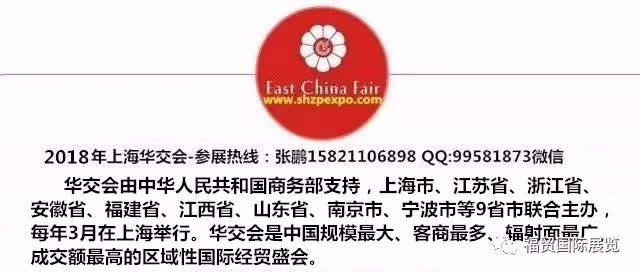華交會(huì)Textile export facing de-globalization in 201819
The internal and external environment for China’s foreign trade development has seen an obvious improvement as of this year, with the stabilized Chinese economy and the recovery of global economy. But the prediction of 2018 foreign trade of textile industry, whose export value accounts for one third of the country, still needs to be cautious. Insiders think it is highly probable that next year’s foreign trade will maintain a steady rise, but also will meet the cold current of “de-globalization” head-on. In the first three quarters this year, China’s total export value increased by 12.4 percent year on year, realizing the anticipated goal of returning to the stable and rising. But according to the foreign trade of cotton textiles in the first three quarters, there isn’t an obvious sign that foreign trade has recovered. In the first nine months, affected by the fluctuation of interest rate, the export value of cotton textiles and cotton garment showed negative growth compared to the same period of last year, while the import value showed positive growth. The cotton textiles exports fell by 0.52 percent year on year, and the cotton garment exports decreased by 2.82 percent year on year. The situation was caused by multiple reasons. Firstly, since the world economy isn’t growing rapidly, it is difficult for the international trade and investment to develop fast. Secondly, according to the research report released by the Ministry of Commerce, the hotbed of de-globalization has not disappeared and protectionism will continue to rise. The negative effect of protectionism will exist for a long time. China’s foreign trade is squeezed by both developed countries and emerging economies. In the first three quarters, Zhejiang, one of China’s largest foreign trade provinces, faced 84 trade remedy investigation cases filed by 19 countries and regions such as the United States and India. The cases involved $1.79 billion, a year-on-year increase of 24.1 percent. Some low value-added and simple labor-intensive products in Yiwu, Zhejiang province, have been greatly impacted by Southeast Asia. Industrial orders concerning clothing, bags and suitcases have started to be transferred to Southeast Asia and Central and Eastern Europe. The new round of international industrial competition is becoming more intense. China’s export may be affected by the backflow of manufacturing industry in developed countries and the rise of mid-low end manufacturing in emerging economies. Statistics provided by the Ministry of Commerce showed that the market shares of China’s laborintensive products in European Union and Japan fell by 0.5 and 0.9 percentage points respectively. But market shares of Southeast Asian products saw an obvious increase. Deglobalization originated from the world politic circle between 2016 and 2017, particularly the noticeable changes that took place in European and American political and economic environment. The “anti-establishment”politicians represented by Donald Trump have come into power. Their ruling shows that they mainly focus on affairs, economic development, and livelihood of their own countries. Trump’s immigration ban and pullout of TPP, as well as Brexit and the winning of different levels in nationalist political party elections in other European countries all reflect the trend of de-globalization. Globalization is currently confronted with great challenges after being popular for decades. Currently, dominant and recessive trade protection policies have sprung up. Many deglobalization actions have significantly impeded the progress of globalization. The authority of multilateral trade system has also been greatly affected. The United States has started antidumping investigations and antisubsidy duty investigations on imported Chinese products since 2007. The investigations covered fields such as aluminum alloy, chemical engineering, textile, steel tube, automobile, and solar panel. How to deal with deglobalization has become an unavoidable task for Chinese government and foreign trade enterprises. Experts point out that factors such as market, capital, internet, policies, culture and society have been further promoting globalization. Despite the trend of deglobalization and trade protectionism, the development of globalization is irresistible. Resources between regions, nations, and industries are being united. The key is how to effectively organize and coordinate the resources, which directly concerns the competitiveness of Made in China. Chinese textile export enterprises should firmly stick to innovation, a “l(fā)ifebuoy” never outdated. Innovation can promote their development and help them remain invincible in the low tide caused by de-globalization.
|


